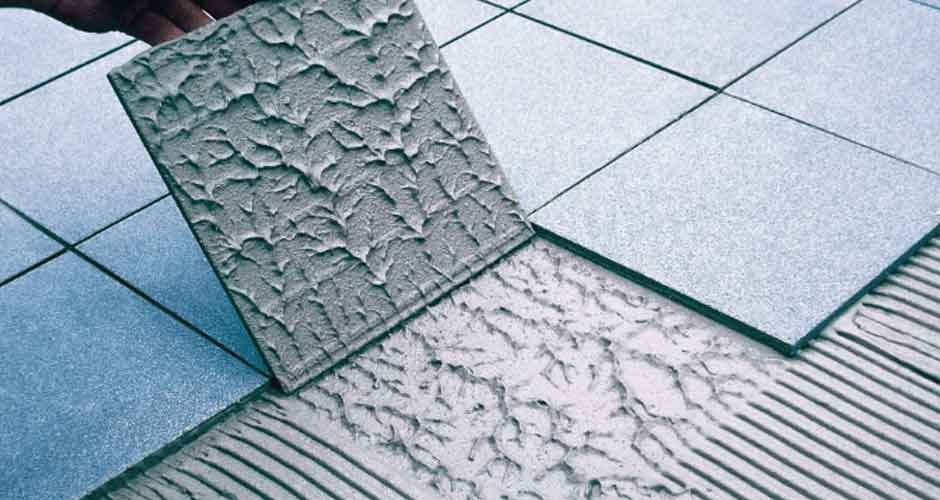Regarding home renovation and construction projects, tile installations are among the most popular choices for enhancing the aesthetics and functionality of spaces. From bathrooms and kitchens to living rooms and outdoor patios, tiles offer versatility, durability, and a wide range of design options.
However, one critical element that often gets overlooked in tile installations is the adhesive. Choosing the right tile adhesive cannot be overstated, as it is crucial in ensuring a lasting and durable installation. In this blog post, we’ll explore why adhesive for tiles matters and how it contributes to the longevity and success of your tiling project.
The Foundation of a Strong Bond
Tile adhesive, or thin-set mortar, is the bonding agent between the tiles and the substrate. It provides the necessary adhesion to keep the tiles securely in place, preventing them from shifting, cracking, or coming loose over time. The adhesive’s strength and quality directly impact the installation’s durability. Using the wrong adhesive or misapplying it can lead to costly repairs and replacements.
Types of Tile Adhesives
Several types of tile adhesives are available on the market, each designed for specific applications and types of tiles. Understanding the different types can help you make an informed decision for your project:
- Cement-Based Adhesives:These are the most common and versatile tile adhesives. They suit most indoor and outdoor applications and work well with various tile materials, including ceramic, porcelain, and natural stone. Cement-based adhesives come in both powdered and pre-mixed forms.
- Epoxy Adhesives: Known for their superior strength and water resistance, epoxy adhesives are ideal for areas exposed to moisture, such as bathrooms and kitchens. They are also resistant to chemicals and stains, making them popular for commercial spaces.
- Organic Mastics:These are ready-to-use adhesives typically used for smaller tiles and light-duty applications. While convenient and easy to apply, organic mastics are unsuitable for areas with high moisture or heavy foot traffic.
- Polyurethane Adhesives:These adhesives offer excellent flexibility and bonding strength, making them suitable for substrates that may experience movement or expansion. They are often used for outdoor installations and areas with temperature fluctuations.
Choosing the Right Adhesive for Your Project
Selecting the appropriate tile adhesive depends on several factors, including the type of tiles, the substrate, and the environmental conditions. Here are some key considerations to keep in mind:
- Tile Material:Different tile materials have varying levels of porosity and weight, which affect the type of adhesive needed. For example, natural stone tiles require a stronger adhesive than lightweight ceramic tiles.
- Substrate Type: The surface on which the tiles will be installed plays a crucial role in adhesive selection. Cement-based adhesives suit most substrates, including concrete, cement board, and drywall. A more flexible adhesive like epoxy or polyurethane may be required for more challenging surfaces like plywood or existing tiles.
- Environmental Conditions:Consider the installation’s location and the environmental factors it will be exposed to. For outdoor areas or spaces with high humidity, choose an adhesive that offers water resistance and can withstand temperature variations.
- Traffic and Load:Another important factor is the amount of foot traffic and load the tiled area will endure. High-traffic areas such as hallways and commercial spaces require superior bonding strength and durability adhesives.
Proper Application Techniques
In addition to choosing the right adhesive, proper application techniques are essential for a successful tile installation. Here are some tips to ensure a lasting bond:
- Surface Preparation: Ensure the substrate is clean, dry, and free of debris, grease, or dust. Correct any imperfections or unevenness before applying the adhesive.
- Mixing and Consistency:Follow the manufacturer’s instructions for mixing the adhesive. The consistency should be smooth and lump-free, similar to peanut butter. Avoid over-mixing, as it can introduce air bubbles and weaken the bond.
- Trowel Selection:Use the appropriate size and shape for the tile size and adhesive type. The notches in the trowel help create even coverage and ensure proper adhesion.
- Application and Setting: Use the trowel to apply the adhesive evenly to the substrate. Press the tiles firmly into place, using spacers to maintain consistent gaps between tiles. Allow the adhesive to cure according to the manufacturer’s recommendations before grouting.
Conclusion
Tile adhesive is the unsung hero of any tiling project, providing the foundation for a strong, durable, and long-lasting installation. By selecting the right adhesive for your specific needs and following proper application techniques, you can ensure that your tiles remain securely in place and retain their beauty for years. Investing time and effort into understanding and choosing the best tile adhesive will pay off in a successful and enduring installation.





